C.F. Martin 1902 00-42 Special / 00-45 Prototype
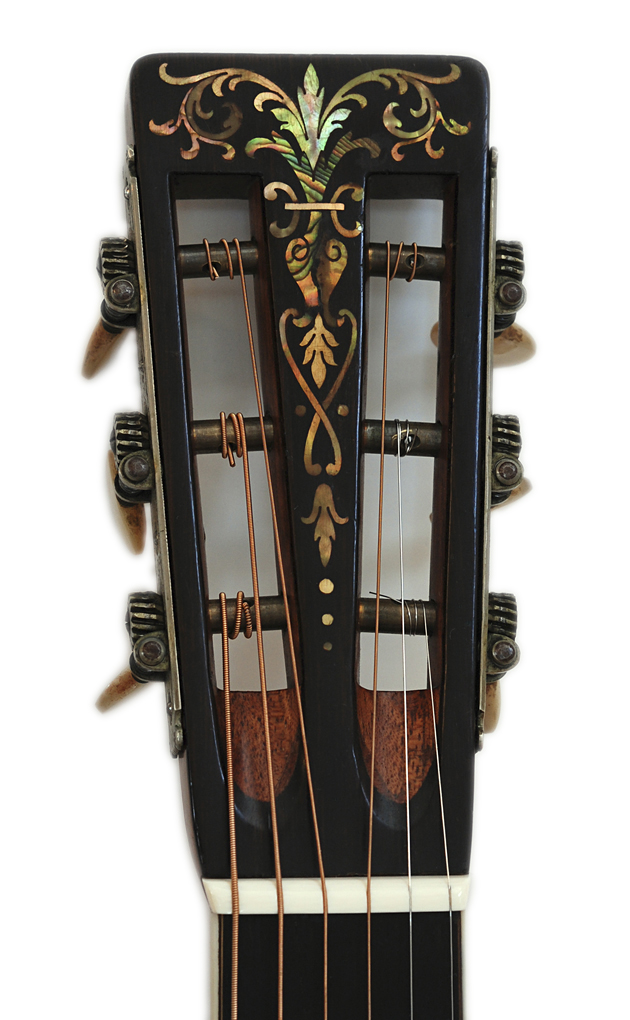
The Style 45 sits at the top of the Martin line, and original pre-war Style 45's are the most desirable and collectable Martins.
Longworth says of the 45: "This style had it's origin in some specially inlaid 42 models. The first was 00-42 #9372 which had special pearl trim
on the sides and back as well as the top. The fingerboard had a vine on it, and there was a beutiful headstock inlay to match.... The year was 1902.
Two more 00-42 guitars with sides and back inlay were made that same year. They were #9410 and #9488."
This guitar is #9488.
Three more prototypes were made in 1903. According to Gruhn Guitars, of the 6 prototypes, this particular 00-42 Special "ended up being the closest to what became know as the style 45".
Longworth says of the headstock design: "The first headstock veneer for the style 45 guitars appears on the original prototype from 1902. It had a very intricate fern pattern.
This inlay is quite rare and is shown only in the 1904 catalog."
The 00-45 is first catalogued in 1904, but only one 00-45 was made that year. Three were made in 1905, and none in 1906, with only ten more being made in the entire decade.
One 1-45 and two 0-45's were made in 1904, and only one 000, and a grand total of 26 Style 45's of any size were made in the entire decade.
As Walter Carter says, "Available in Sizes 0, 00, and eventually 000, Style 45 was not a great success at first. Not until the opulent, carefree 1920's would sales of any Style 45 model top 10 a year."
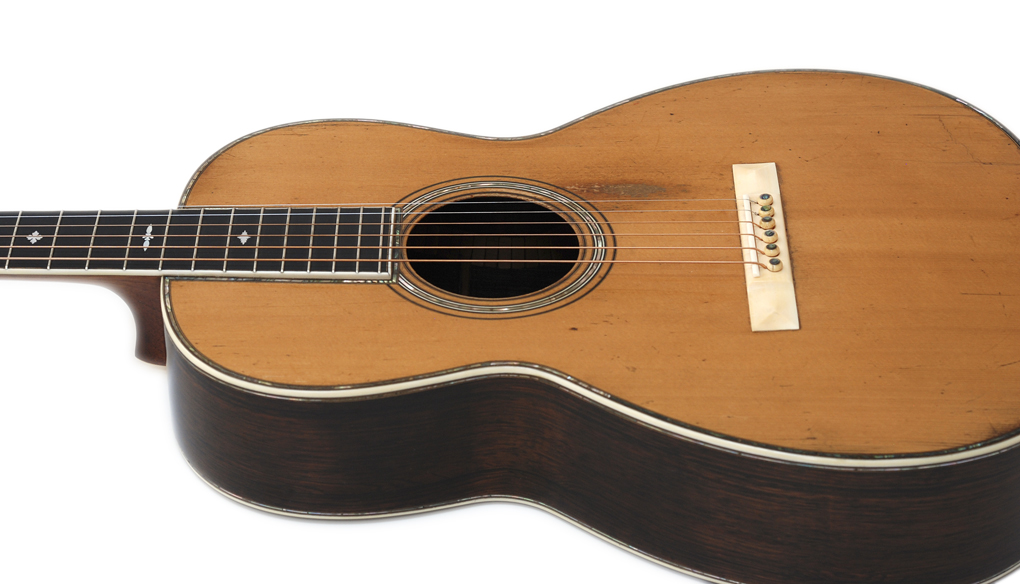
The pyramid style bridge is made of genuine ivory, as are the nut, saddle, bridge pins, and end pins, and the binding on the top, back and sides of the body, and also the fingerboard. The "German silver" tuning machines have buttons made of pearl. The border inlaid on the top, back, and sides of the guitar is in abalone "Japan pearl". An additonal connecting link of pearl is inlaid around the end of the fingerboard, and abalone is also inlaid into the soundhole ring, as well as the ivory bridge pins, and end pin.
The German wood marquetry on the back of the guitar is of a design which has become known as the "45 Style" backstripe.
The back and sides are French Polished Brazilian Rosewood, and the top is most likely of German spruce. The ebony fingerboard on this protype has the "snowflake" inlays which have become distinctive to pearl inlayed Martin guitars. These inlays on frets 5, 7, 9, 12 and 15 would be standard on style 45 for a decade. In 1914, they remained on the style 42, and were expanded to three more frets on the style 45. This guitar has a dove tail joined headstock and cedar neck with volute, and scalloped X style braces.
This is believed to be the only prototype to have all of the features and inlays that would become standard on the early Style 45, and with minor modification, would become the hallmark of all Style 45 guitars for many years to come.
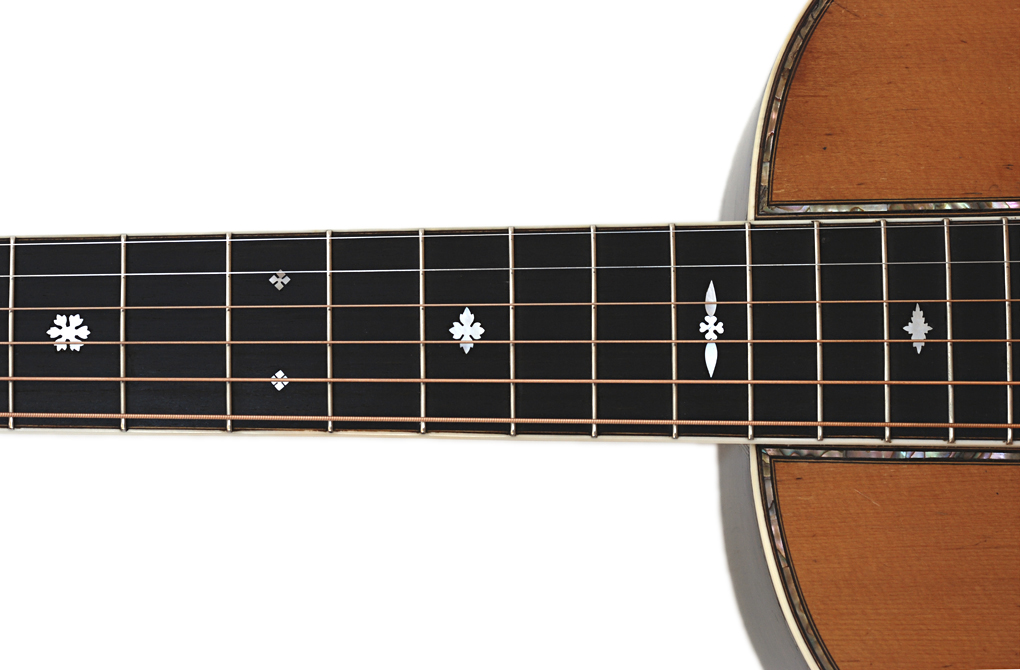
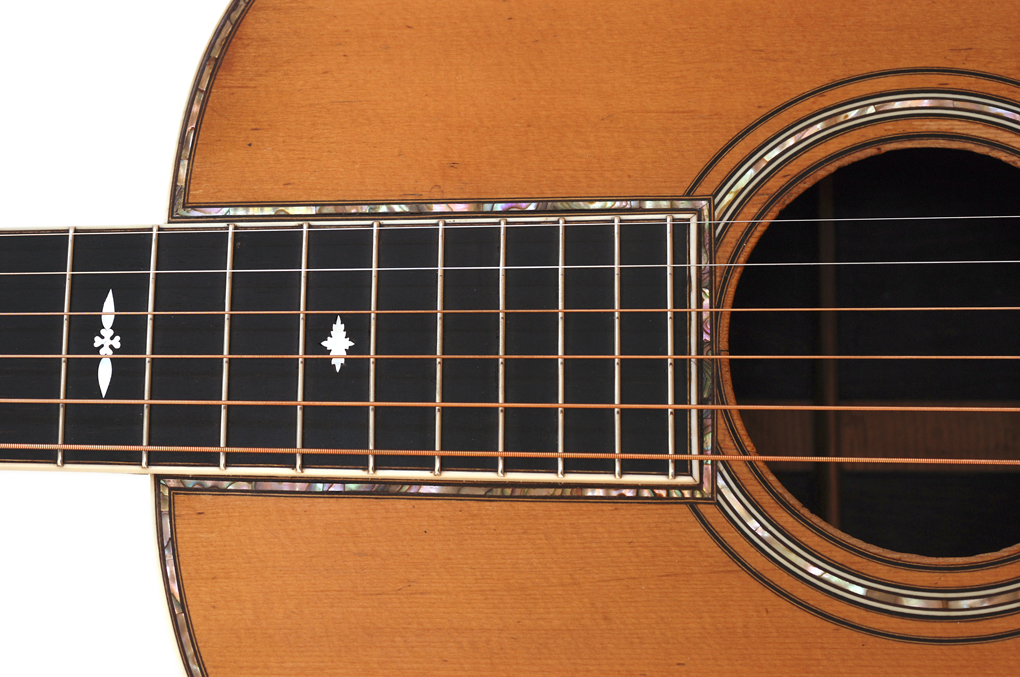
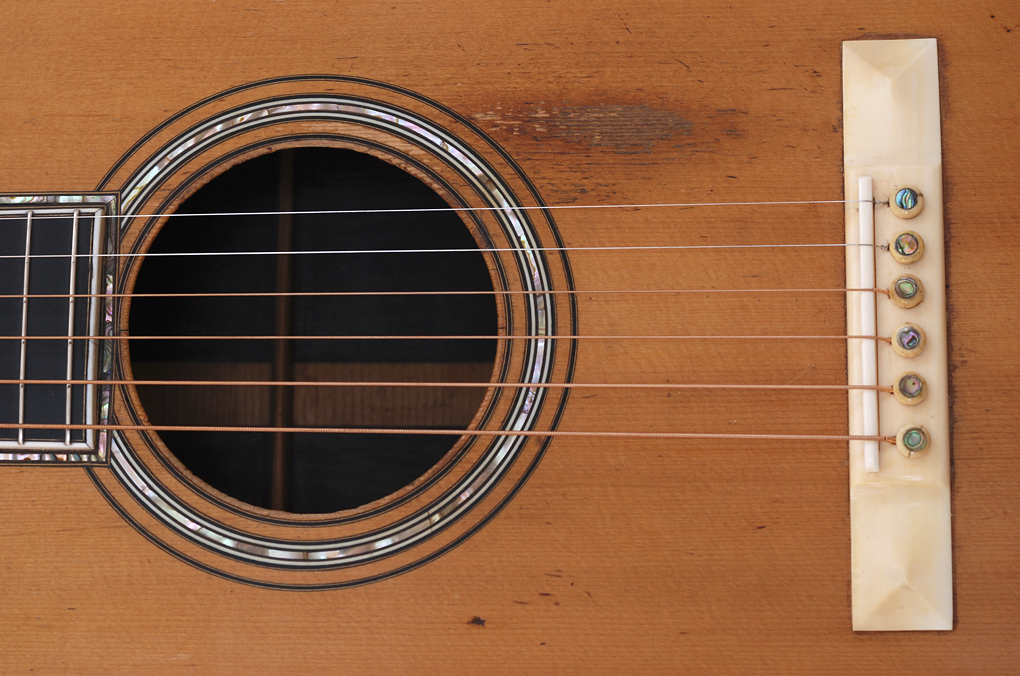
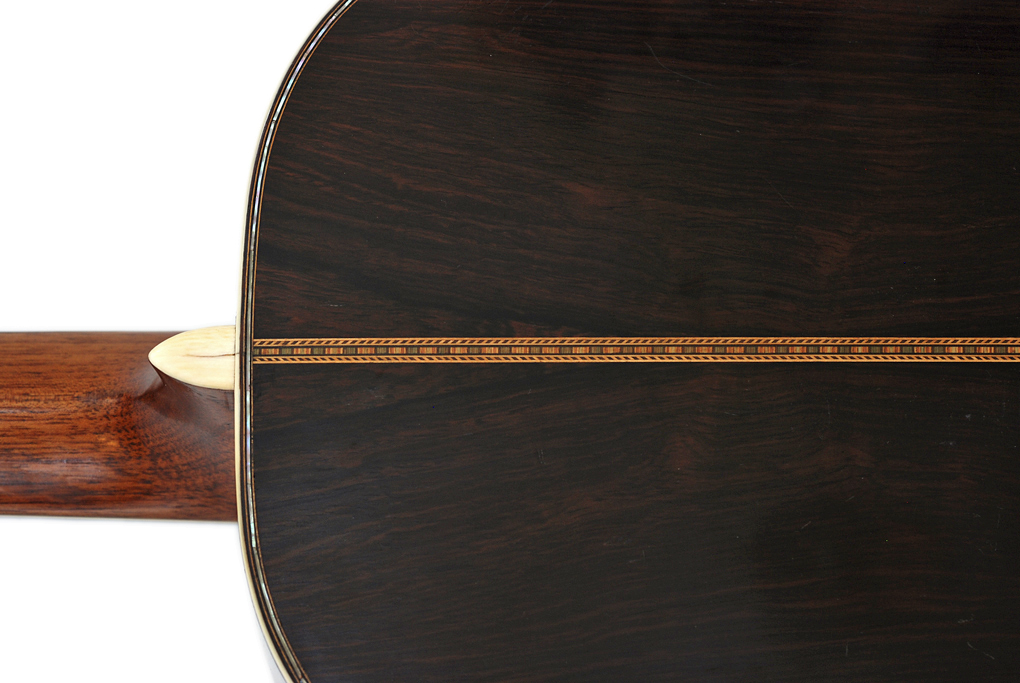
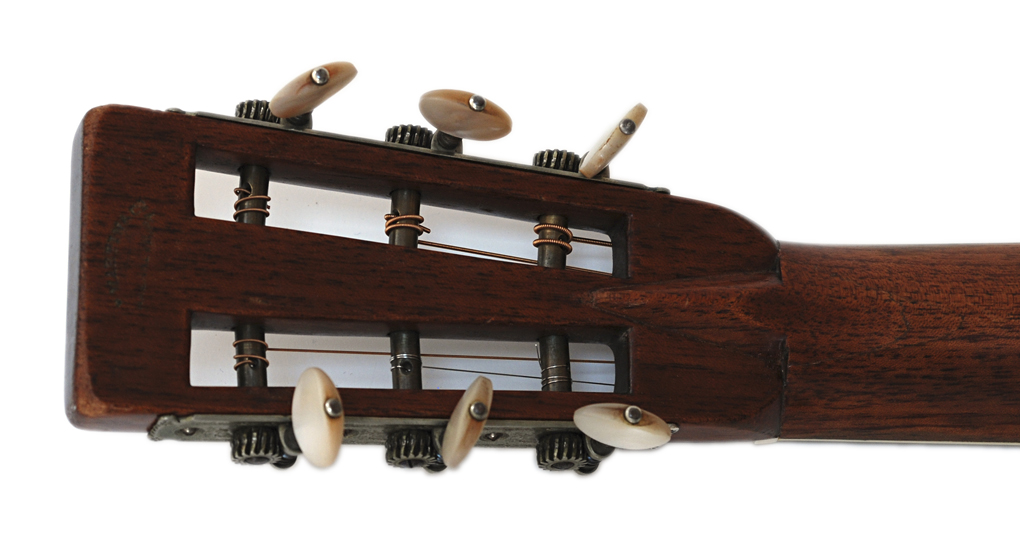
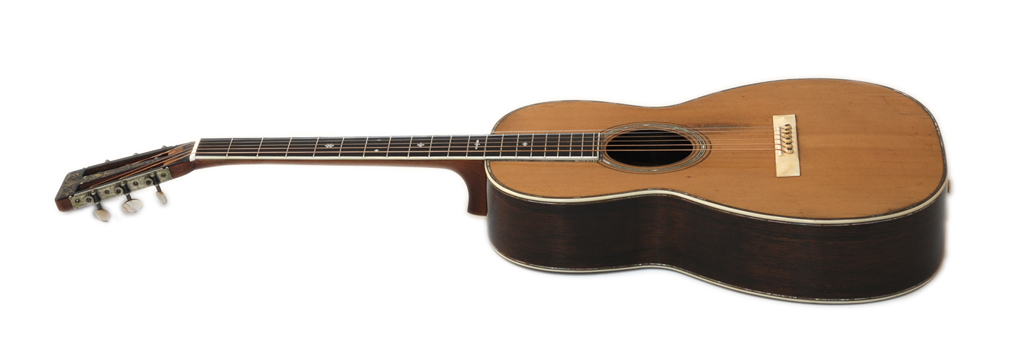
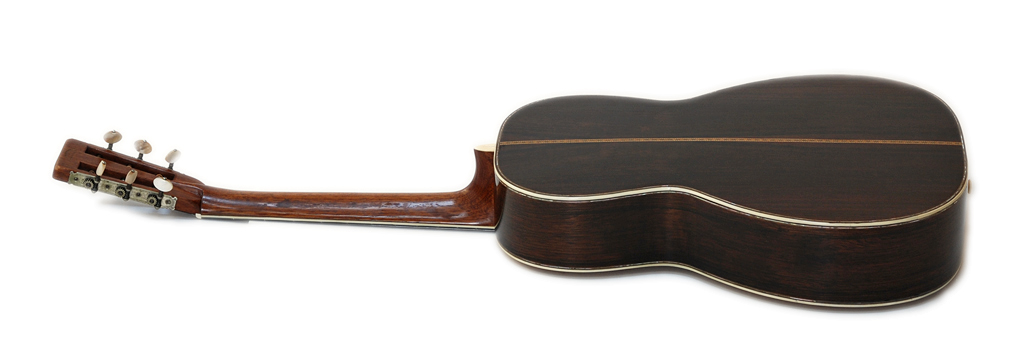
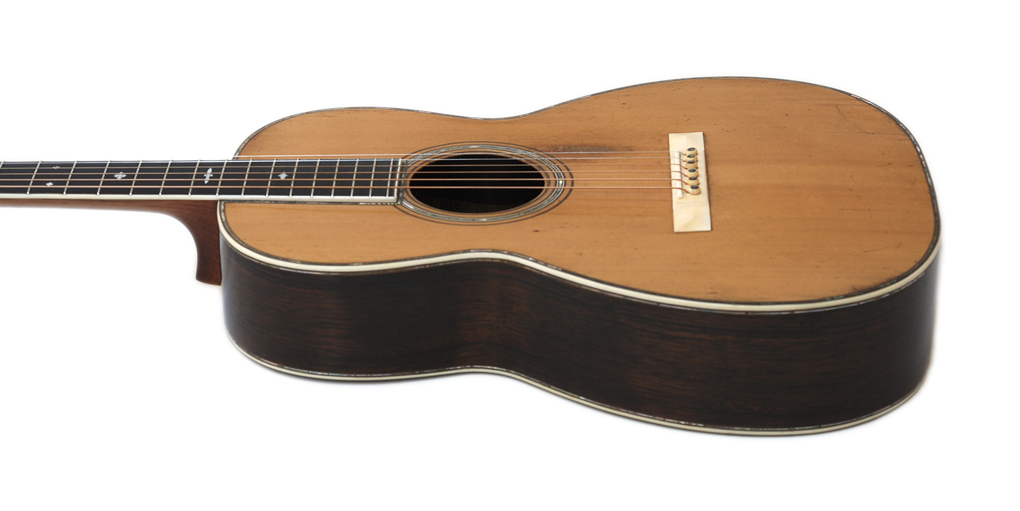
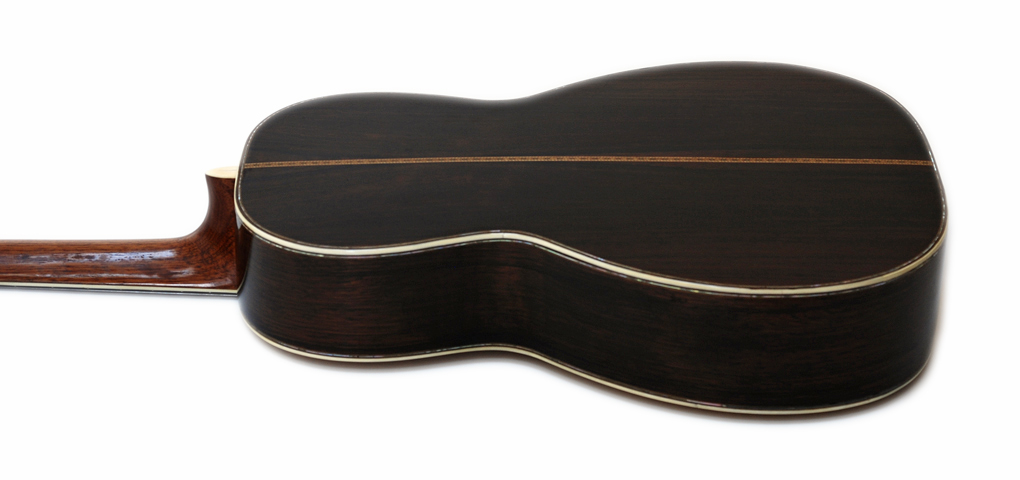
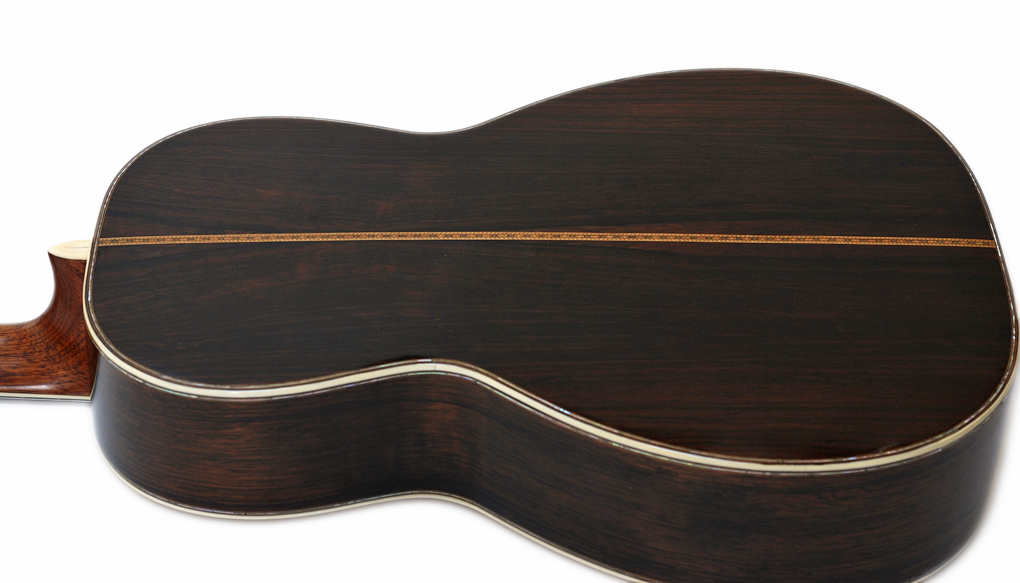
Robert,
Here are some more shots of the 00-45 known as 00-42 Special order. This was a 45 style pro-type. Martin messed around with 6 different prototypes and this ended up being the closest to what became know as the style 45. Let me know if you need more photos.
Christie
These are photos taken with the use of a black light. The black light will make things like touch-up and cracks show. You can see things that are not visible to the eye under black light.
These show side cracks that were glued and touched-up.

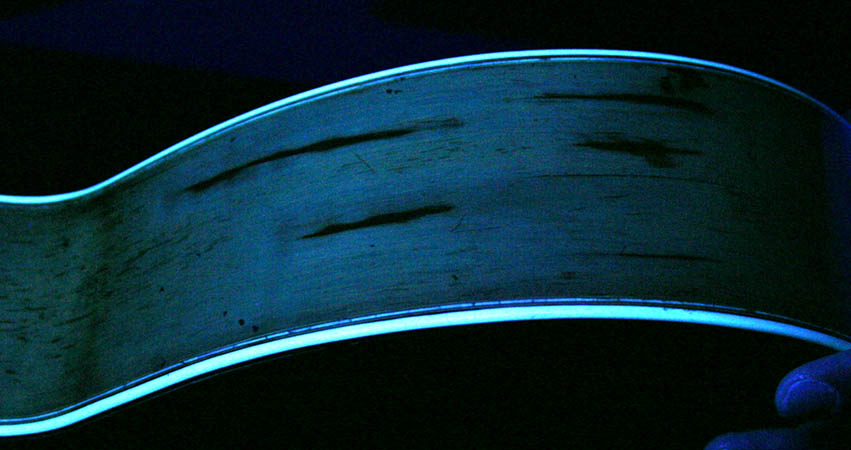
From Hank Risan's website.
He mistakenly claims #9372 is the only Style 45 prototype with pearl inlay on the back and sides.
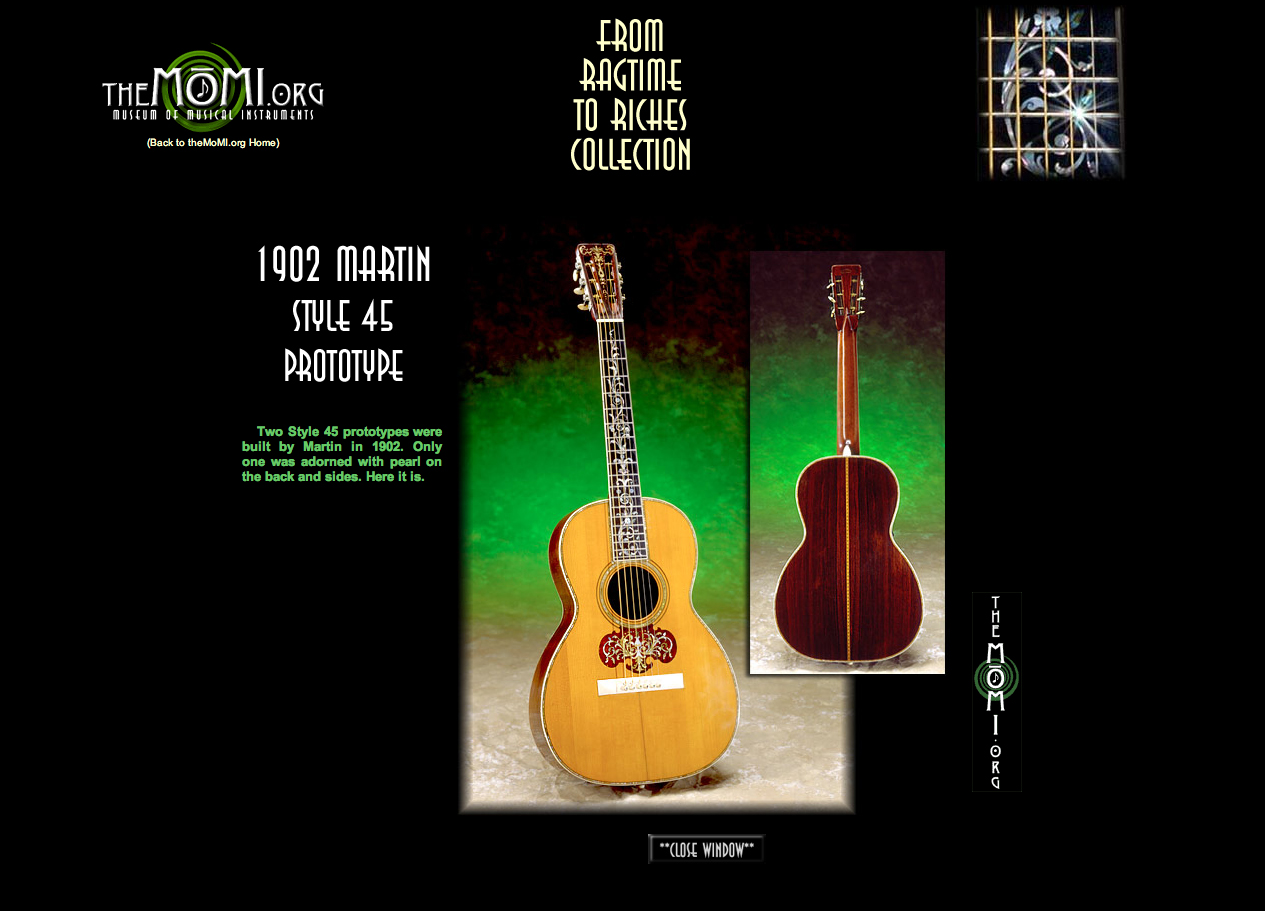
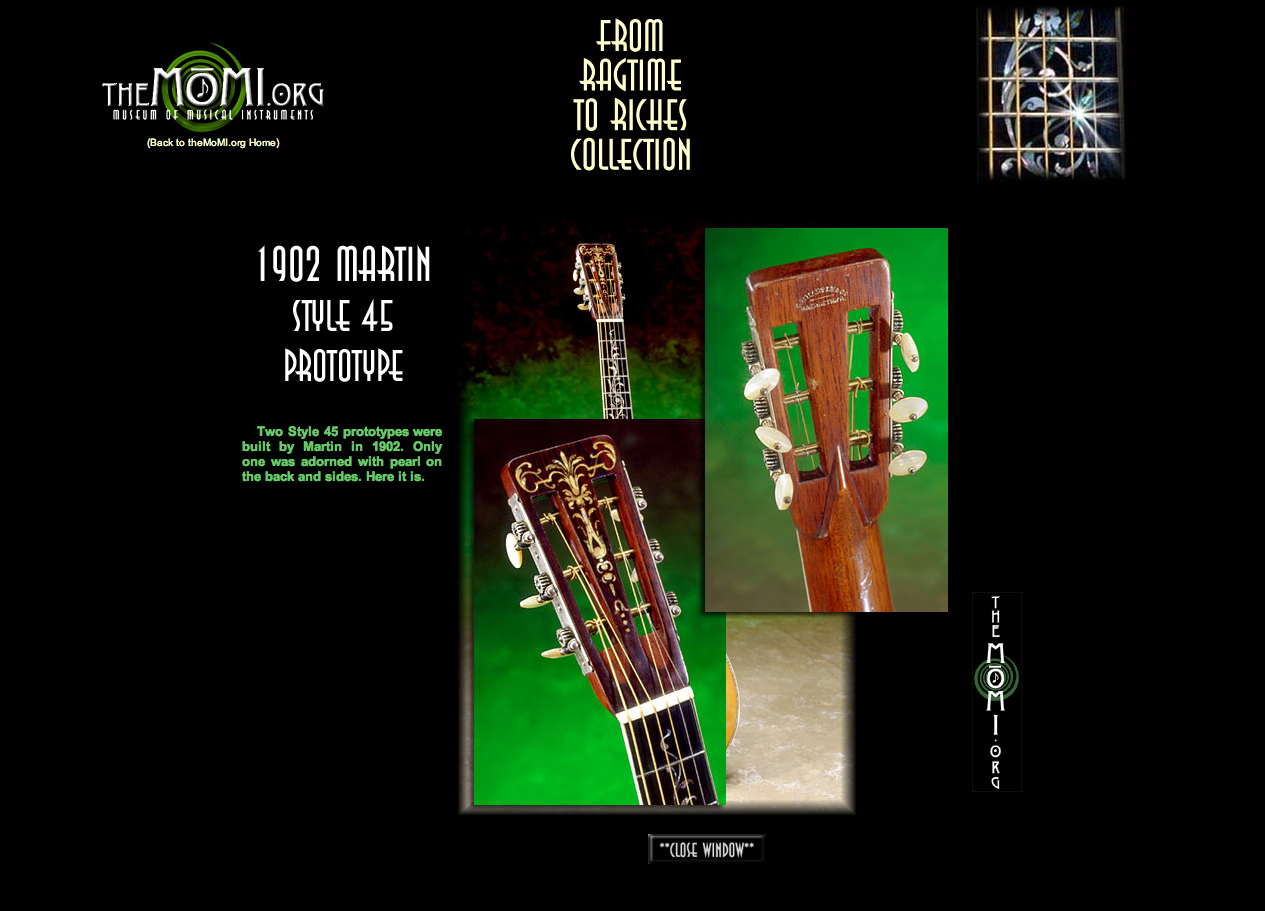
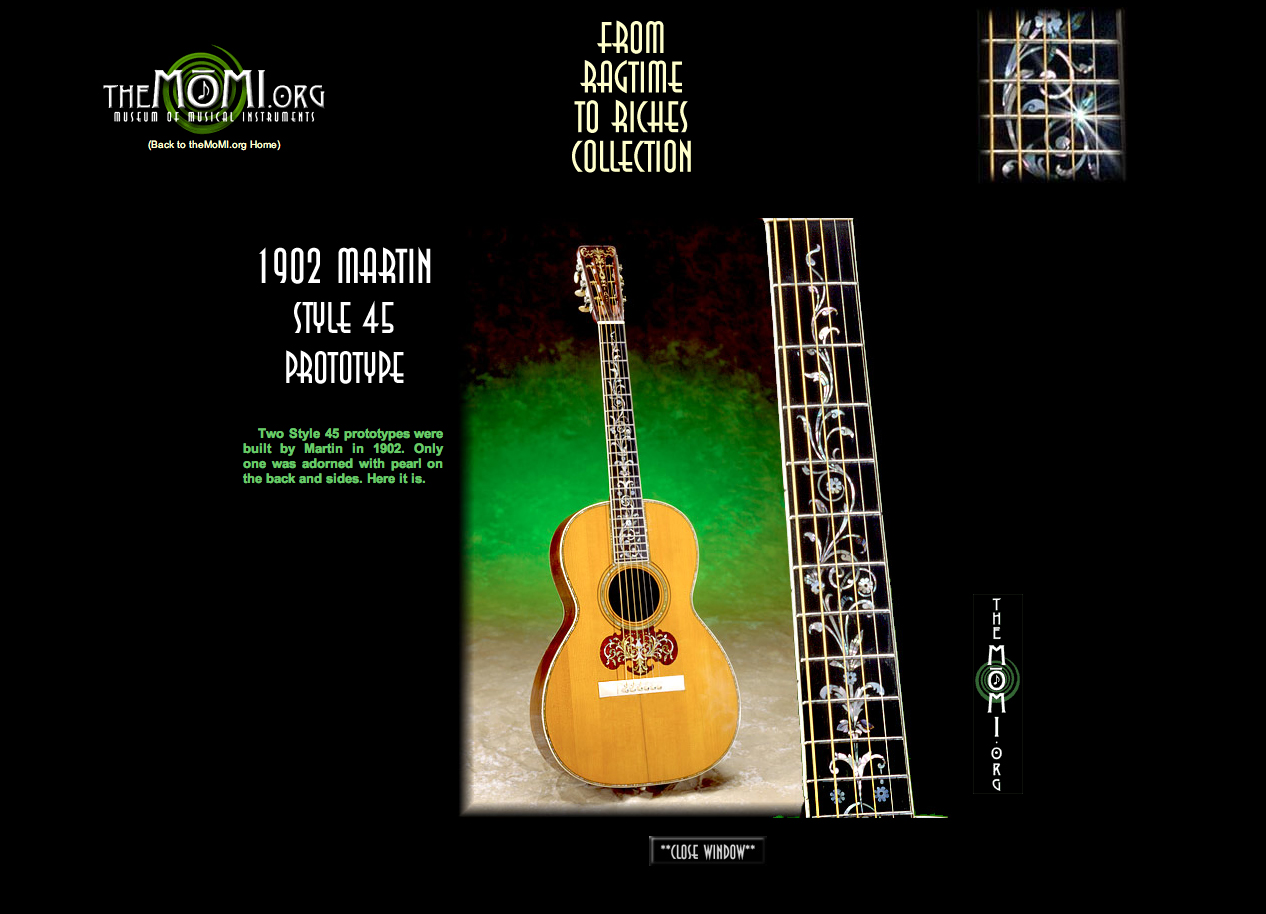
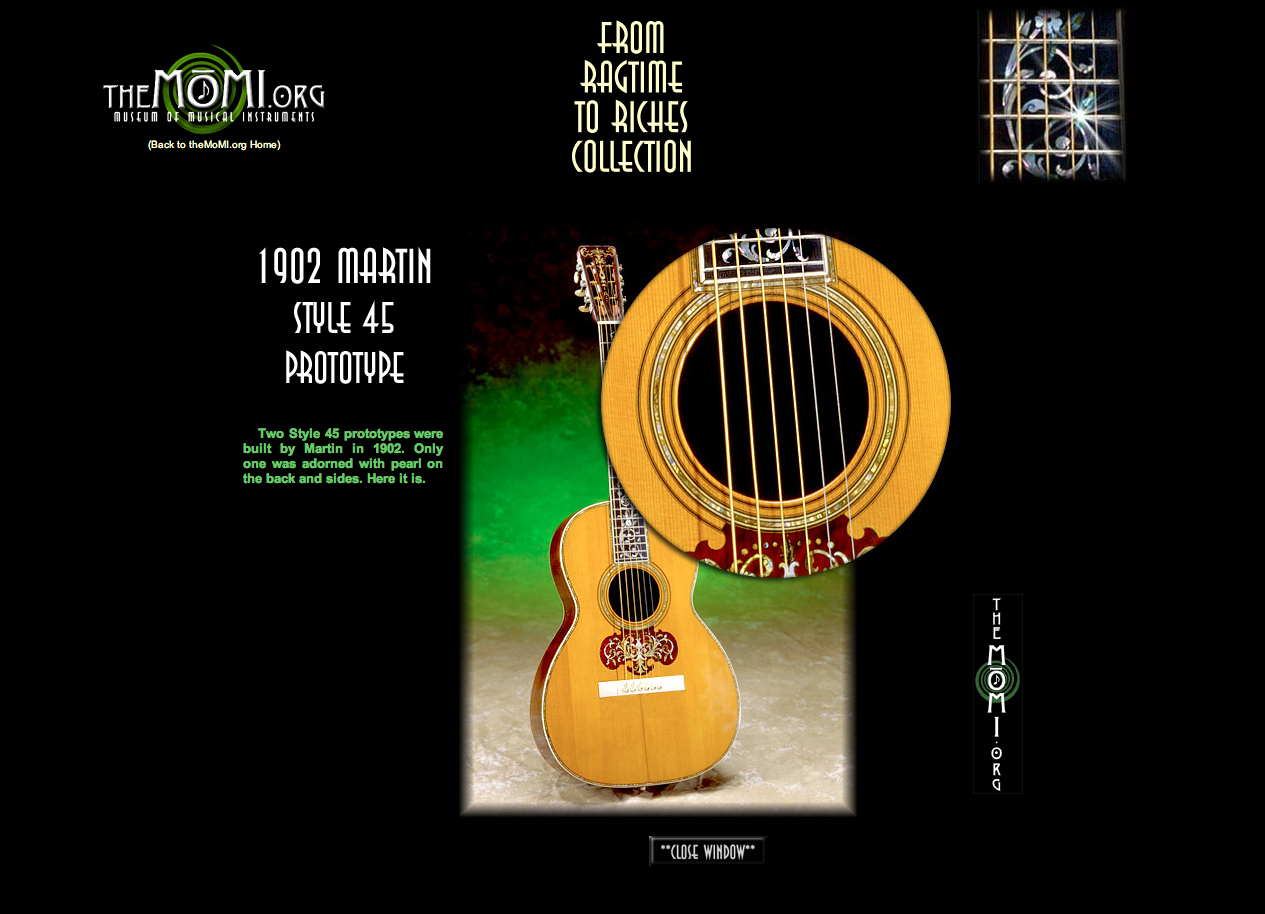
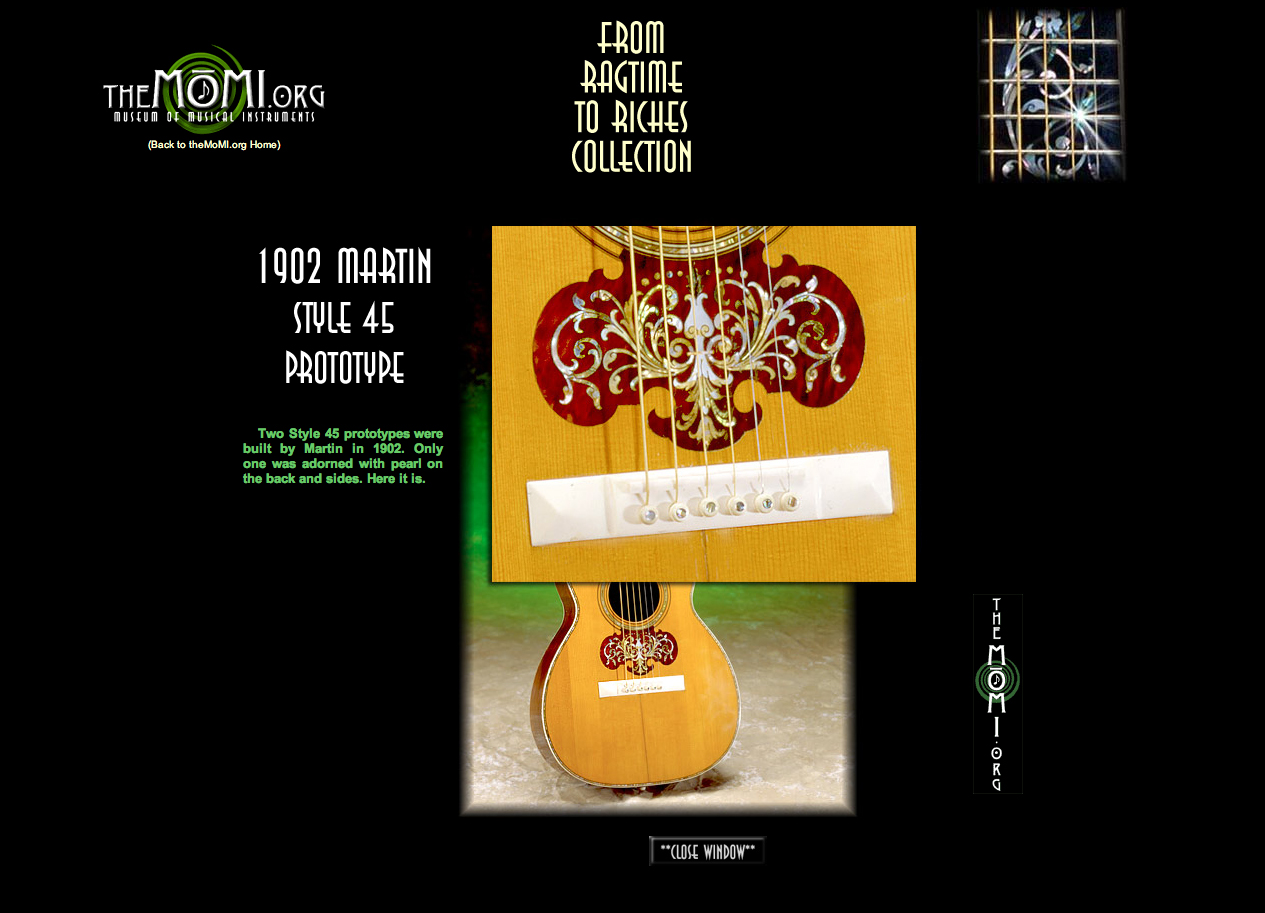
Article about #9372 from Vintage Guitar Magazine
1902 Martin 00-42 Special, preview of Style 45
Photo by Kelsey Vaughn, courtesy Gruhn Guitars
By George Gruhn and Walter Carter
It has all the appointments of a Martin 00-45, particularly the abalone pearl trim around all the borders of the body, but this guitar is entered into Martin’s books as a special-order 00-42. The reason is simple: Martin did not yet have an official Style 45 when this guitar was made in 1902.
Abalone pearl trim was nothing new on a Martin in 1902, at least around the top border. Style 42 had been standardized by the late 1850s, and its abalone pearl went all the way around the fingerboard extension. The soundhole, too, featured an abalone ring (as did all of the 30-something styles, as well as Style 27). An ivory bridge with pyramid ends added a touch of elegance.
Beyond the top of the guitar, however, Style 42 was pretty plain. There was a strip of wood marquetry down the center of the back. Fingerboard inlays – initially, just three snowflakes – were a relatively recent addition, introduced in the 1890s, and the headstock was unadorned except for the Martin brand-stamp on the back
In 1902, Martin made what went down in the books as a 00-42 Special but that term hardly describes the “presentation” level of ornamentation. The fingerboard and peghead featured an intricate floral- or vine-pattern inlay. The guitar also had a pickguard – which no Martin guitars of that period had – in the style of bent-top, bowlback mandolins, with a symmetrical shape, situated under the strings. It, too, was heavily inlaid with the floral pattern. For good measure, an abalone border was added to the sides and back.
This “pearled-out” 00-sized guitar, serial number 9372, was far too ornate to be a standard Martin catalog model, but it did start people thinking about taking Style 42 to the next level. Only 38 serial numbers later (which would be the same day today but probably two months later in 1902, a year in which Martin made only 218 guitars), Martin made another 00-42 Special (#9410), with the side and back trim but without the fancy fingerboard and pickguard inlay, and 78 guitars farther down the line, Martin made yet another – this month’s feature (#9488).
Why not the larger 000 body size for these ultra-deluxe models? Again, the answer is simple. It didn’t exist yet, at least not in Martin’s standard line. The 000 was still experimental in 1902, with only five 000 examples – all designated as specials – made in that year.
Martin made more of these Style 42-plus guitars with abalone-bordered rims and back in 1903 and then in 1904 standardized the style, giving it the number 45 and offering it in the catalog. Only four guitars were logged into the books as Style 45s in that first official year of production, but they covered the most of the body sizes with a 1-45, two 0-45s and a 00-45. For the record, the first official Style 45 was one of the 0-45s. The first 000-45 wasn’t made until in 1905.
The step up from Style 42 to the abalone body borders and abalone peghead inlay of Style 45 cost the buyer $30. On a 1-45 that represented, coincidentally, a 42 percent increase from $70 to $100. The price went up $5 as the body sizes increased; the 0-42 was $75 and the 00-42 was $80, but the upcharge for a Style 45 was still $30, so the 0-45 was $105 and the 00-45 was $110.
This 1902 guitar features the first version of the Style 45 peghead inlay, which is sometimes referred to as the “fern” pattern. Martin pictured a Style 45 guitar with this inlay in the 1904 catalog and the same photo appeared as late as the 1909 catalog, but Martin had actually begun using a simpler pattern, known today as the “torch,” by 1905, and that version lasted until about 1927. A slightly simplified torch took over but only until the early 1930s. By that time Martin was switching to a 14-fret neck with a solid peghead that allowed more room for a logo and/or ornamentation than the slotted pegheads, and on Style 45 guitars (even those that retained the slotted peghead) the delicate torch was replaced with the bold, all-caps, vertically oriented CF MARTIN inlay.
Style 45 got off to a slow start. It was 1919 before production of any one model hit double digits, but Style 42 models weren’t selling much better until the 1920s. In fact, it’s difficult to assess whether guitarists preferred one style over the other because the preferences vary from one body size to the next.
The small Size 1 was becoming passé by the time Style 45 appeared, and Martin made only six 1-45s from 1904 to 1919, when the company stopped offering all the pearly styles in Size 1. In the 0-size, Style 42 outsold Style 45 through the 1920s; then both the 0-42 and 0-45 virtually disappeared in the 1930s. In the 00-size, Style 42 was more popular than Style 45, and it remained strong in the 1930s while production of 00-45s dropped to a total of 3 for the decade. In the 000-size, however, Martin didn’t put a 000-42 on the price list until 1918, so the fancier Style 45 dominated by default.
The initial designation – Style 42 special – understated just how special Style 45 Martins would become. In the pre-World War II years, it was only surpassed briefly by the OM-45 Deluxe (produced only in 1930), which featured additional inlays in the pickguard and bridge. In today’s vintage market, Style 45s follow the same pattern as they did in their original listings. The larger the body, the greater the value. The largest of the prewar models – the D-45 – is, of course, the Holy Grail of vintage Martins.
Although Martin has offered models in recent years with higher model numbers than Style 45, along with many limited-edition, commemorative or artist models with fancier appointments, Style 45 remains today as it was when this “pre-45” guitar helped to get the Style 45 ball rolling in 1904 – simply Martin’s top style.
I believe there are two inaccuracies in this article.
"Only 38 serial numbers later (which would be the same day today but probably two months later in 1902, a year in which Martin made only 218 guitars), Martin made another 00-42 Special (#9410), with the side and back trim but without the fancy fingerboard and pickguard inlay, and 78 guitars farther down the line, Martin made yet another – this month’s feature (#9488)."
#9410, now in California, has the same presentation features as #9372. #9488 is in fact the first 00-45 prototype with "standard" Style 45 features, and not designed as a presentation model.
"This 1902 guitar features the first version of the Style 45 peghead inlay, which is sometimes referred to as the “fern” pattern."
#9488 has the first version inlay in the sense that it is a fern as opposed to the later torch.
However, it is a second and quite different fern.
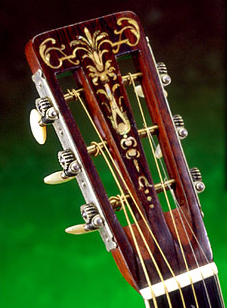
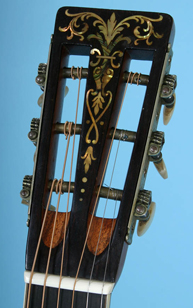
#9372 #9488


